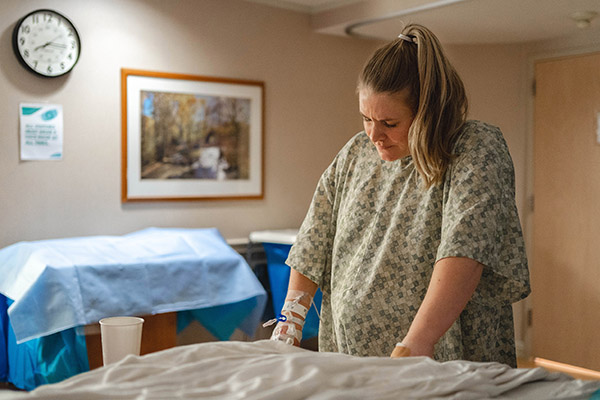Pandemic Parenting
By Laura Maxson
Babies, overwhelmingly, go head-down by their due date. Close to 75% are head-down (vertex) by 28 weeks. While some babies linger for a few more anxiety-filled weeks, only 3-4% refuse to turn head-down by 37 weeks. No one plans to have a breech (head-up) baby at term, but everyone should consider the possibility – just in case.
There are several reasons a baby might not go head-down on schedule. The uterus might have an unusual shape, a large fibroid or scar tissue, or there might be a very short umbilical cord, unusual placental position, or an abnormal amount of amniotic fluid. Occasionally, a baby might have a condition or anomaly that prevents them from turning, but commonly, no reason is identified. In the past, vaginal breech birth was considered a variation of normal, but since 2000, it has been mostly relegated to cesarean delivery.
Instead of skipping that breech information in childbirth books, read it.
There will be a high likelihood that it won’t affect you, but if you do have a breech baby in the last trimester, you’ll be glad you did. In fact, many suggestions to help turn a breech baby head-down can be incorporated into normal pregnancy care to encourage babies to get into the preferred vertex position sooner, rather than later.
Chiropractic care keeps the spine aligned and pelvis in balance during pregnancy, which can help discomforts in general. Chiropractors certified in the Webster technique have specific skills to help the round ligaments relax, potentially creating space for a baby to turn.
Acupuncture treatments can help with symptoms of both early and late pregnancy. Chinese moxibustion (burning moxa near specific acupuncture points) and/or acupuncture needles have been shown to help babies turn head-down.
Gail Tully’s Spinning Babies website is a wealth of information about the muscular/skeletal factors that can impact a baby’s position (including breech). There’s lots of specific suggestions to try to help babies get into the most optimal position for birth.
Rebecca Dekker’s Evidence Based Birth website gives evidence-based information, concrete numbers, and options for parents to consider as they make decisions on breech and External Cephalic Version (ECV) with their care provider.
External Cephalic Version (ECV or version) is usually performed by an obstetrician and gives good results. A version is an attempt to turn a baby into a head down position.
An ultrasound is performed just before a version to look at the placenta, cord, amniotic fluid levels and baby – occasionally, a baby will have already turned! Once all is confirmed normal, an IV drug may be given to relax the uterus; sometimes an epidural is placed. A care provider, and often an assistant, applies lubrication to the abdomen and locates the baby’s head and bottom. Often using teamwork and steady, firm pressure, the baby is nudged and encouraged to turn head down. The baby’s heart rate is monitored closely during the procedure and then continuously for a time after to ensure all is well. The success rate for turning is about 50%, and rises with the use of epidural, particularly if a first attempt was unsuccessful.
A version is done in the hospital with access to emergency care in the rare instance of fetal distress, ruptured membranes, vaginal bleeding or anything else concerning. While preterm labor or need for immediate delivery is rare, it is why versions are performed near term around 36-37 weeks.
Avoiding a cesarean is undoubtedly a safer birth experience for the birthing person. And avoiding a first cesarean will prevent an automatic repeat cesarean. Guidelines also say that a vaginal breech birth may be considered if the version fails, but admits that OBs rarely have the skills or desire to do a vaginal breech delivery.
Thinking about and talking with a partner and/or care provider about the possibility of a breech baby ahead of time will give the best chance of being prepared. Check Birth Network of Santa Cruz County’s listings of acupuncturists, chiropractors and doulas. Find out how often your provider does versions, and how many are successful. Providers less confident or experienced about the procedure may not encourage a version. Find out who in the Bay Area does vaginal breech birth and what their requirements are; most will want to meet with parents before 37 weeks, so quick decisions might need to be made. Being informed is being ready.
For more information:
Birthnet.org
evidencebasedbirth.com
spinningbabies.com
acog.org/womens-health/faqs/if-your-baby-is-breech
Laura Maxson has been the director of Birth Network since 1998. She became an advocate in the early ’80s after experiencing a lack of information and choice around birth and breastfeeding. Laura has worked as a breastfeeding counselor, childbirth educator, doula, and homebirth midwife.








